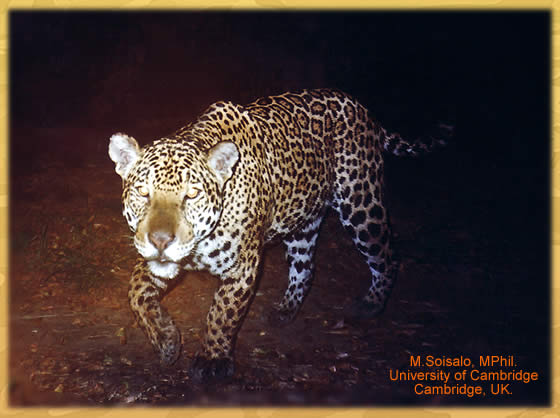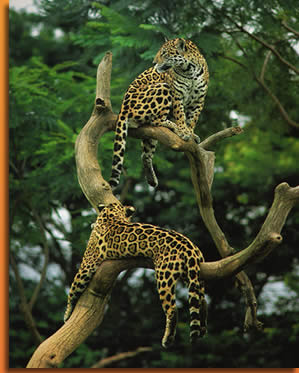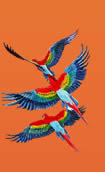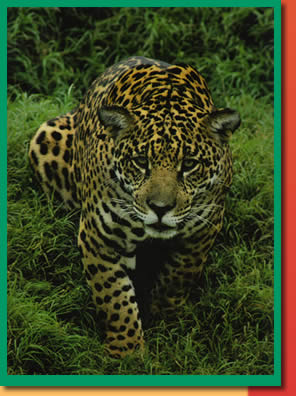

in the southwestern Pantanal wetlands of Brazil.








Group at the University of Cambridge, UK.
She is a conservation biologist working with camera trap systems to photograph, identify, and count jaguars in the wild. Eko Noiz tee shirt sales will be helping Marianne to continue this project.
In 2000, M.Soisalo joined jaguar researcher S.Cavalcanti (Utah State University) who since then has been
studying jaguars and livestock depredation in a private ranch in the southwestern Pantanal region of Brazil.
In 2003, M.Soisalo began her own research in collaboration with S.Cavalcanti's ongoing telemetry study in
the area. Camera traps were set in the field to capture photographs of these elusive and lesser-studied cats. As their markings are never the same, we can literally spot their differences and identify each individual.
Surveys have been conducted yearly since then and both researchers are still collaborating in a long-term
monitoring of the jaguar population at this particular site.
The combination of these two cutting-edge methods used together for the first time is providing us with novel insights into jaguars, their behaviour and ecology and the camera trapping method.
This web page aims to give you an overview of the project. You can read the science and browse through the photos which tell a visual story of the research being conducted. Read about jaguars, their habits, behaviour, interesting facts and become familiar with the Pantanal region through information and photos.



















The jaguar is the largest cat of the Neotropics and third largest worldwide after the tiger (P.tigris) and lion (P.leo).
Yet, it is far less studied than other big cats.
The name "jaguar" comes from the Tupi-Guarani, a traditional language once spoken from the Amazon region to Paraguay and the Andes.
Originally the term was yaguara', "wild beast which overcomes its prey at a bound". Now the jaguar is called "el tigre" in various Central and South American countries and "onca" in Brazil.
as buffalo, wildebeest and zebra in the Americas, the jaguar usually deals with smaller prey such as capybara, peccary and caiman.
In 1972 the jaguar was placed on the list of endangered species by the U.S Fish and Wildlife Service, in 1973
by the Convention of International Trade in Endangered Species (CITES) in its Appendix I, and in 1976 by the International Union for Conservation of Nature (IUCN).
This status was in large part due to the great quantity of skins traded worldwide.
Studies of jaguar biology, as of any wild feline, are slow processes because these wary animals, whose senses are highly developed and super-alert, do everything possible to avoid contact with men.
These studies showed that the jaguar is top predator in the complex tropical forest food chain and as such may be used as an indicator species gauging the general well-being and stability of the ecosystem.
Current deforestation and agricultural development in the Amazon and Orinoco basins form the biggest long-
term threat to the jaguar's existence in places where appreciable numbers of jaguars still live.
The forecast made by the scientific community for the jaguar's future is unfavourable. If the jaguar is to be
saved, most scientists recommend its protection through strictly regulated hunting and the designation of large areas where it is completely protected from habitat loss and competition from ranching and farming interests.
Source: "The Jaguar" (1992) by Rafael Hoogesteijn and Edgardo Mondolfi, Armitano Publishers. More to come soon...



(c) Eko Noiz Ltd. 2006